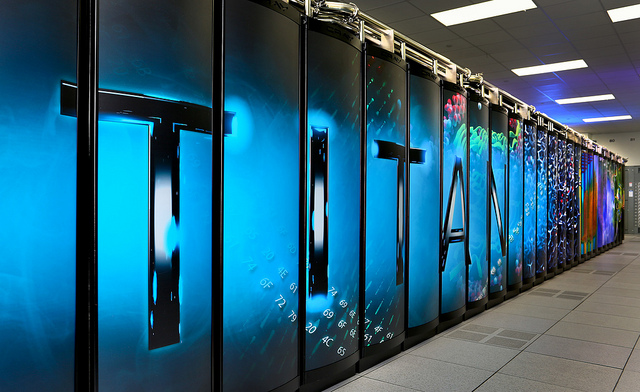
Scientists at Oak Ridge National Laboratory are starting to build applications for a supercomputer that might not go live for another seven years.
The lab recently received more than $5 million from the Department of Energy to start developing several longterm projects.
Thomas Evans’s research is among those funded, and it’s a daunting task: His team is trying to predict how small sections of particles inside a nuclear reactor will behave over a long period time.
The more precisely they can simulate nuclear reactors on a computer, the better engineers can build them in real life.
“Analysts can use that [data] to design facilities, experiments and working engineering platforms,” Evans says.
But these very elaborate simulations that Evans is creating take so much computing power that they cannot run on Oak Ridge’s current supercomputer, Titan — nor will it be able to run on the lab’s new supercomputer, Summit, which could be the fastest in the world when it goes live in two years.
So Evans is thinking ahead, he says, “to ultimately harness the power of the next generation — technically two generations from now — of supercomputing.
“And of course, the challenge is, that machine doesn’t exist yet.”
The current estimate is that this exascale computer, as it’s called, will be several times faster than Summit and go live around 2023. And it could very well take that long for Evans’s team to write code for it.
The machine won’t just be faster, Evans says. It’s also going to work in a totally new way, which changes how applications are written.
“In other words, I can’t take a simulation code that we’ve been using now and just drop it in the new machine and expect it to work,” he says.
The computer will not necessarily be housed at Oak Ridge, but Tennessee researchers are playing a major role in the Department of Energy’s Exascale Computing Project. In addition to Evans’ nuclear reactor project, scientists at Oak Ridge will be leading the development of two other applications, including one that will simulate complex 3D printing. They’ll also assist in developing nine other projects.
Doug Kothe, who leads the lab’s exascale application development, says the goal is not just to think ahead to 2023. The code that the researchers write should be able run on any supercomputer built in next several decades, he says.
Despite the difficulty, working on incredibly fast computers is also an exciting prospect, Kothe says.
9(mda2nzqwotg1mdeyotc4nzi2mzjmnmzlza001))

